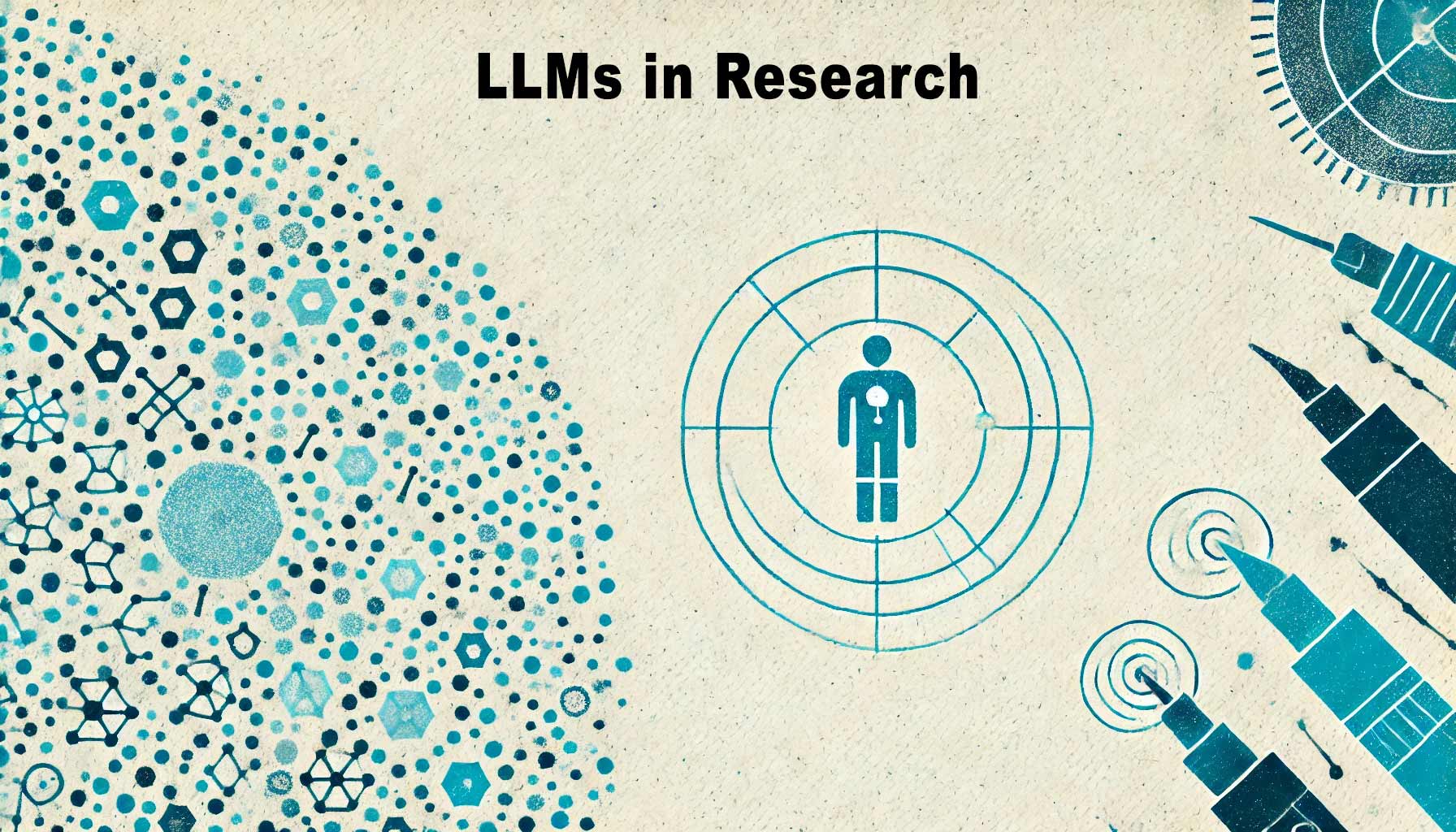Introduction
Generating innovative hypotheses is a fundamental yet challenging aspect of scientific research. How can researchers uncover novel hypotheses from vast amounts of data efficiently?
Large language models (LLMs) offer a powerful solution. These advanced AI tools can analyze extensive datasets to identify patterns and correlations that might be overlooked by traditional methods. In this article, we explore how LLMs can enhance hypothesis generation from large datasets, providing examples from sedentary behavior and physical activity research.
Understanding LLMs and Their Capabilities
- Defining LLMs: Large language models are sophisticated AI systems designed to understand, generate, and analyze human language. They utilize deep learning techniques to process and interpret complex data, making them ideal for tasks that require pattern recognition and data analysis.
- Relevance to Hypothesis Generation: LLMs are particularly well-suited for hypothesis generation because of their ability to handle large and diverse datasets. By sifting through vast amounts of information, LLMs can identify subtle correlations and propose new research directions that might not be apparent through manual analysis.

The Traditional Process of Hypothesis Generation
- Manual Analysis: Traditionally, researchers generate hypotheses through a combination of literature reviews, expert knowledge, and manual data analysis. This process involves reviewing existing studies, identifying gaps in the knowledge, and analyzing data to propose new research questions.
- Challenges and Limitations: The traditional methods of hypothesis generation are time-consuming and often limited by the researcher’s ability to process large volumes of data. Additionally, human biases can influence which hypotheses are considered, potentially overlooking novel or unexpected patterns.
How LLMs Enhance Hypothesis Generation
- Automated Data Analysis: LLMs can process and analyze vast amounts of data quickly and accurately, which is a significant advantage over traditional methods. By leveraging their computational power, LLMs can handle datasets that include various types of information such as biometric data, environmental factors, and self-reported logs. Example: In physical activity research, LLMs can analyze data from wearable devices, including step counts, heart rate, and sleep patterns. This allows for a comprehensive view of a participant’s lifestyle and health metrics, facilitating more informed hypothesis generation.
- Identifying Novel Patterns: One of the most powerful capabilities of LLMs is their ability to identify complex patterns and correlations within data that might not be evident through manual analysis. These patterns can highlight unexpected relationships and lead to innovative research questions. Example: LLMs might detect a correlation between prolonged screen time and reduced physical activity levels that wasn’t previously documented. By analyzing large datasets across different populations, LLMs can uncover subtle trends that inform new hypotheses about sedentary behavior’s impact on health.
- Generating Hypotheses: Once patterns and correlations are identified, LLMs can assist in formulating new hypotheses. By interpreting the data in context, LLMs can propose plausible explanations and research questions that build on the identified patterns. Example: After detecting a link between environmental factors like daylight exposure and physical activity levels, LLMs might generate hypotheses about how seasonal changes influence exercise habits. Researchers can then design studies to test these hypotheses, potentially leading to new insights in the field of physical activity research.

Practical Applications in Research
Sedentary Behavior and Physical Activity Research
- Example 1: LLMs can analyze data from wearable devices and suggest a hypothesis about the relationship between screen time and physical activity levels. By examining large datasets, LLMs might find that increased screen time correlates with decreased physical activity, prompting researchers to explore interventions to mitigate this effect.
- Example 2: LLMs could integrate data from sleep patterns, dietary logs, and physical activity to propose hypotheses about the holistic impacts of lifestyle on health. For instance, an LLM might identify a pattern where poor sleep quality combined with low physical activity levels predicts higher instances of metabolic syndrome, suggesting areas for targeted interventions.
Other Research Areas
- Example 3: In medical research, LLMs can analyze patient records to propose new links between symptoms and diseases. For example, an LLM might detect a pattern where certain demographic factors combined with specific symptoms predict the onset of a particular disease, leading to new diagnostic criteria or preventive measures.
- Example 4: In environmental science, LLMs can analyze climate data to suggest hypotheses about the effects of pollution on biodiversity. By examining data from various ecosystems, LLMs might identify how different pollutants impact species diversity, guiding future research and conservation efforts.

Benefits of Using LLMs for Hypothesis Generation
- Efficiency: LLMs streamline the hypothesis generation process, saving time and resources. By automating the analysis of large datasets, LLMs allow researchers to focus on interpreting results and designing experiments rather than manually sifting through data.
- Novel Insights: LLMs have the potential to identify novel insights that may be missed by traditional methods. By uncovering subtle patterns and correlations, LLMs can propose innovative hypotheses that drive research in new directions.
- Reduced Bias: Automated analysis by LLMs can reduce human biases in hypothesis generation. Since LLMs objectively process all available data, they are less likely to be influenced by preconceived notions or expectations, leading to more unbiased and comprehensive research questions.
- Scalability: LLMs can handle data from a wide range of sources and scales, from small, focused studies to large, multi-center research projects. This scalability makes LLMs a valuable tool for both exploratory and confirmatory research. Example: In a large-scale study on sedentary behavior, LLMs can integrate data from thousands of participants, analyzing patterns and proposing hypotheses that consider diverse demographic and lifestyle factors. This comprehensive approach ensures that the resulting hypotheses are robust and widely applicable.
Future Directions and Implications
- Advancements in LLM Technology: As LLM technology continues to evolve, its capabilities for hypothesis generation will be further enhanced. Future improvements may include more sophisticated natural language processing, better integration of diverse data types, and enhanced predictive modeling.
- Broader Implications: The potential for LLMs to revolutionize the research process is immense. By providing a continuous source of novel hypotheses, LLMs can drive innovation across various fields, from health research to environmental science. This could lead to more effective interventions, improved public health strategies, and a deeper understanding of complex systems.
Conclusion
Large language models offer transformative tools for hypothesis generation from large datasets. By automating data analysis, identifying novel patterns, and proposing new research directions, LLMs enhance the efficiency, accuracy, and scope of scientific research. Researchers are encouraged to adopt LLMs in their work to uncover new insights and drive innovation in their fields.
You Might Also Be Interested
📅 If you want to learn more about Fibion SENS, do not hesitate to book a video call with our expert Dr. Miriam Cabrita.

🔍 Elevate your project with Fibion SENS Motion 3 Devices Test Package for precise activity analysis. Order now for hands-on experience and comprehensive insights.

🔍 You may also discover other valid and reliable products in our portfolio, such as the Fibion Device, Fibion Sleep, Fibion Vitals, Fibion Emfit, and Fibion Circadian, all designed to assist in research measuring physical activity, sedentary behavior, and sleep.
Frequently Asked Questions
What are large language models (LLMs)? +
Large language models (LLMs) are advanced AI systems designed to understand, generate, and analyze human language. They use deep learning techniques to process and interpret complex data, making them ideal for tasks that require pattern recognition and data analysis.
How can LLMs enhance hypothesis generation? +
LLMs can enhance hypothesis generation by processing and analyzing vast amounts of data quickly and accurately. They identify complex patterns and correlations within data, proposing new research directions that might not be apparent through manual analysis.
What are the benefits of using LLMs for hypothesis generation? +
Using LLMs for hypothesis generation offers several benefits, including increased efficiency, the ability to uncover novel insights, reduced human bias, and scalability. These advantages help researchers to generate more accurate and comprehensive research questions.
Can you give examples of LLM applications in research? +
In physical activity research, LLMs can analyze data from wearable devices to generate hypotheses about the relationship between screen time and physical activity levels. In medical research, LLMs can analyze patient records to propose new links between symptoms and diseases, leading to new diagnostic criteria or preventive measures.
What are the future directions for LLM technology in research? +
As LLM technology continues to evolve, future improvements may include more sophisticated natural language processing, better integration of diverse data types, and enhanced predictive modeling. These advancements will further enhance hypothesis generation and drive innovation across various fields of research.















